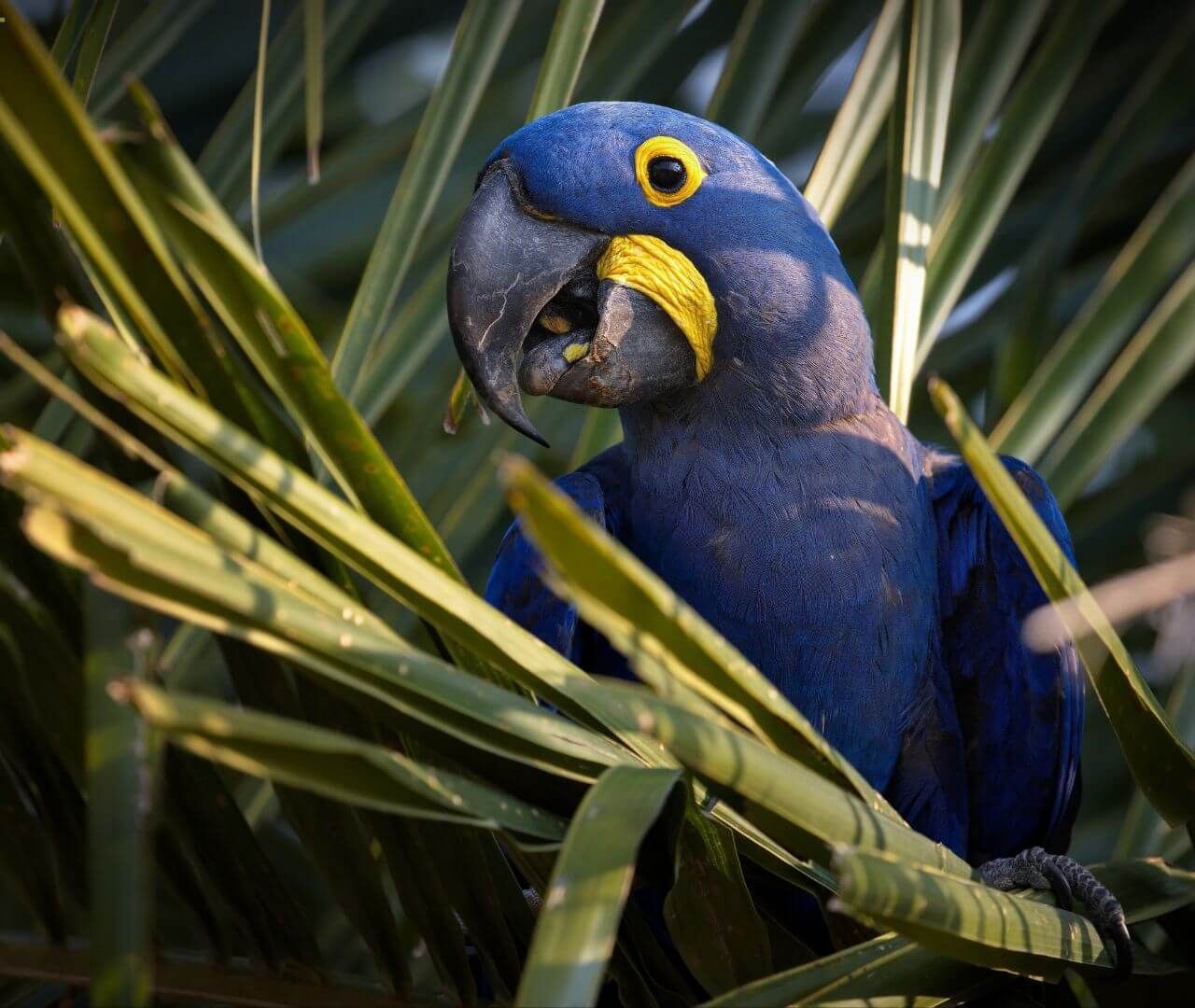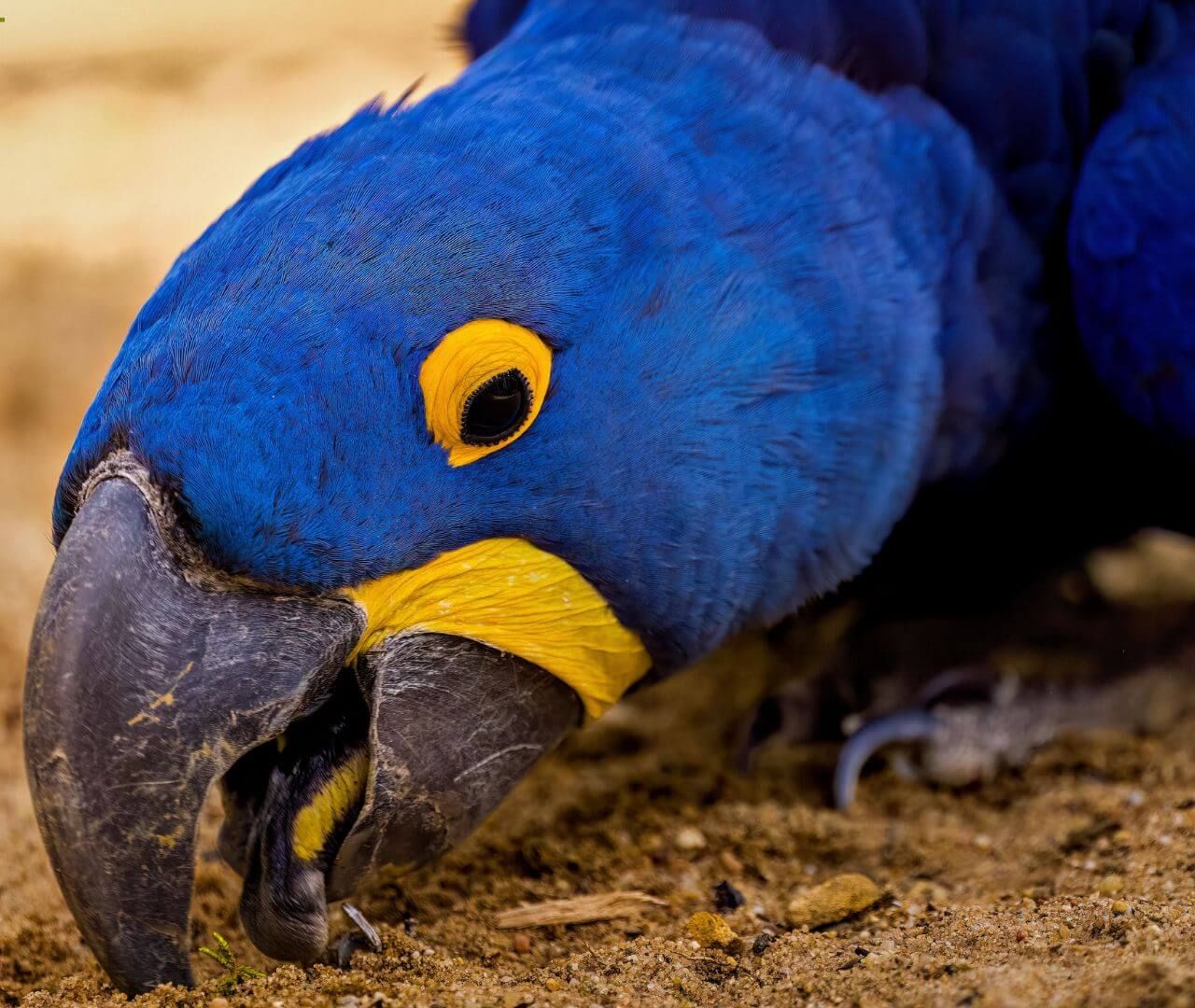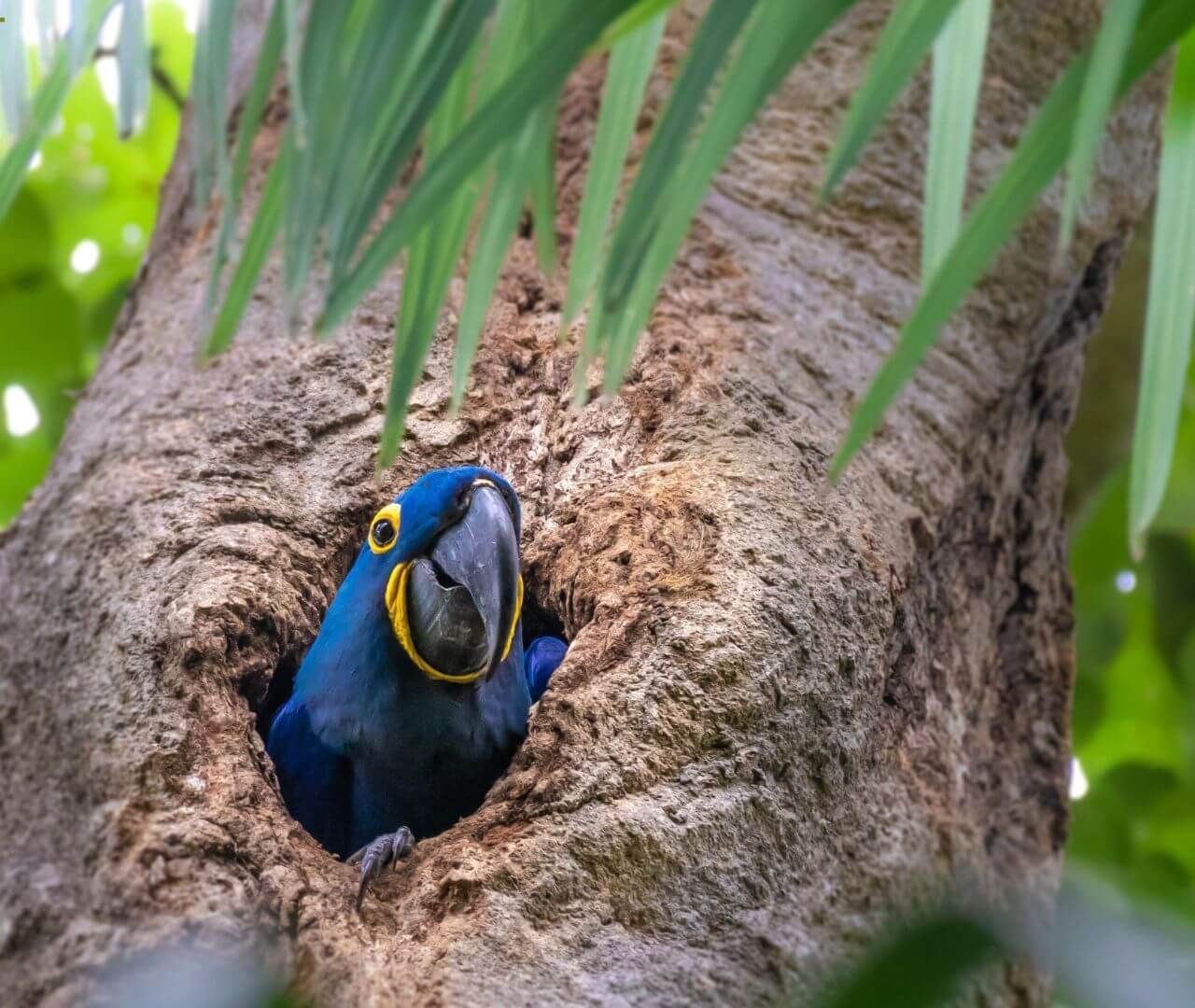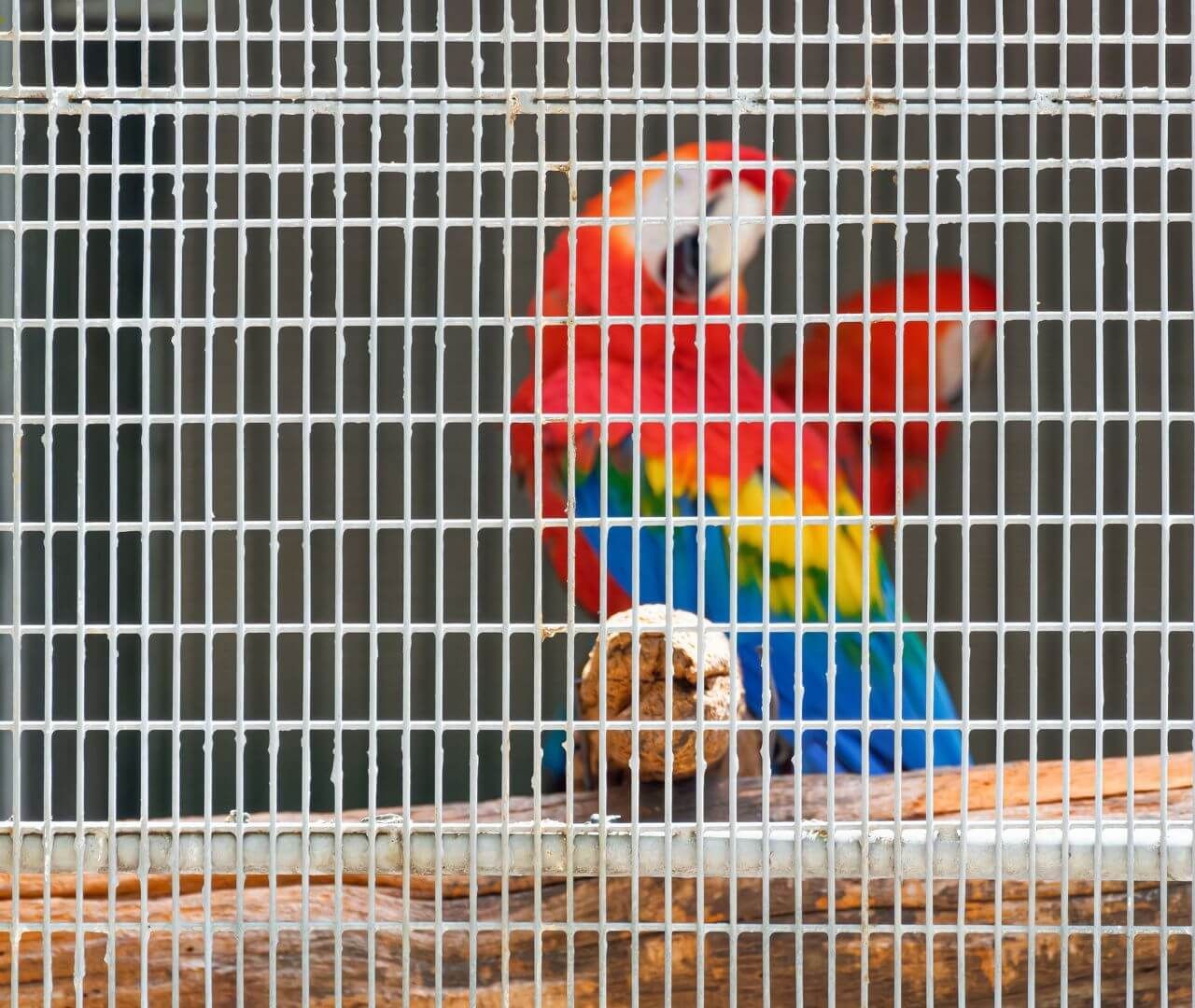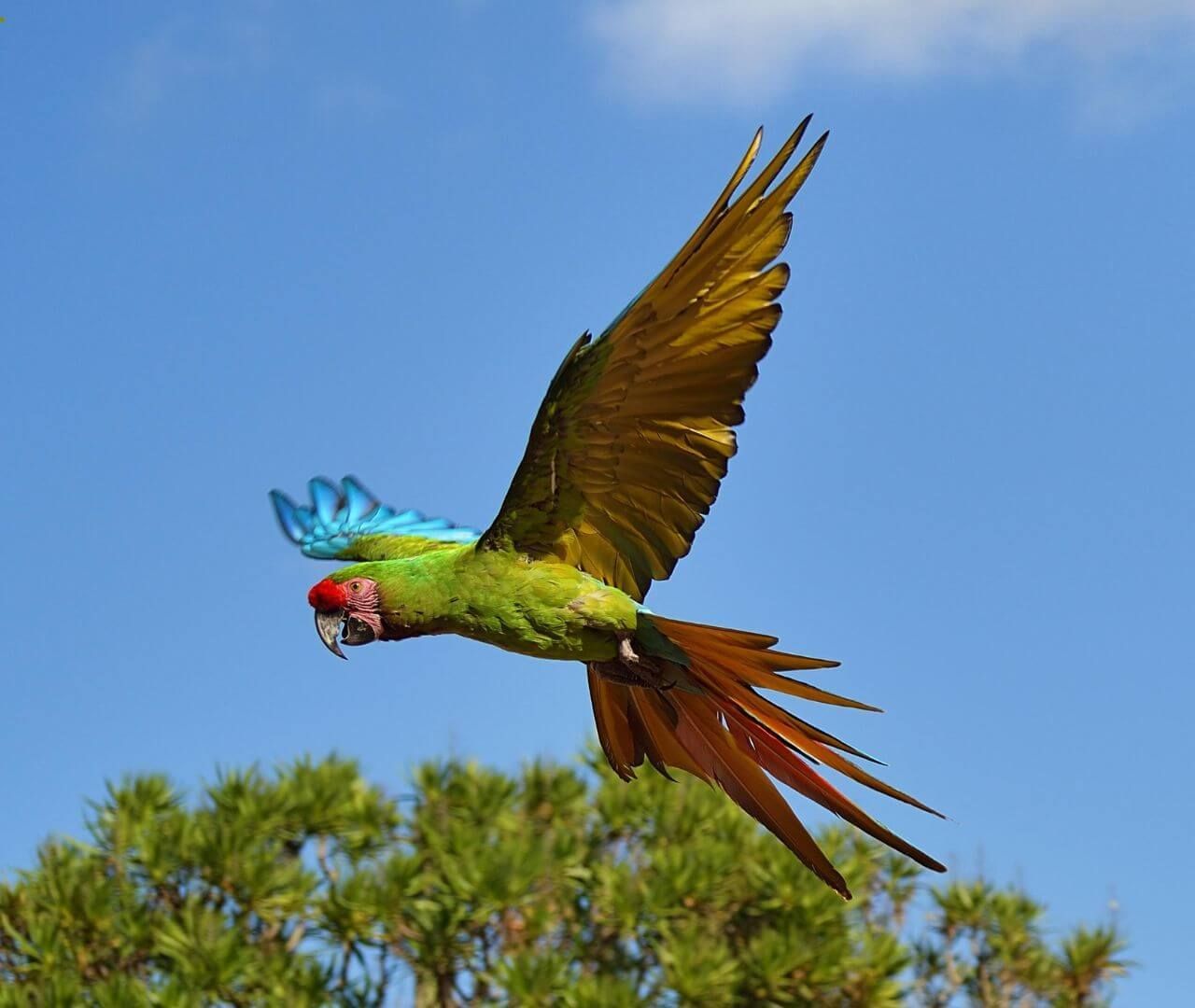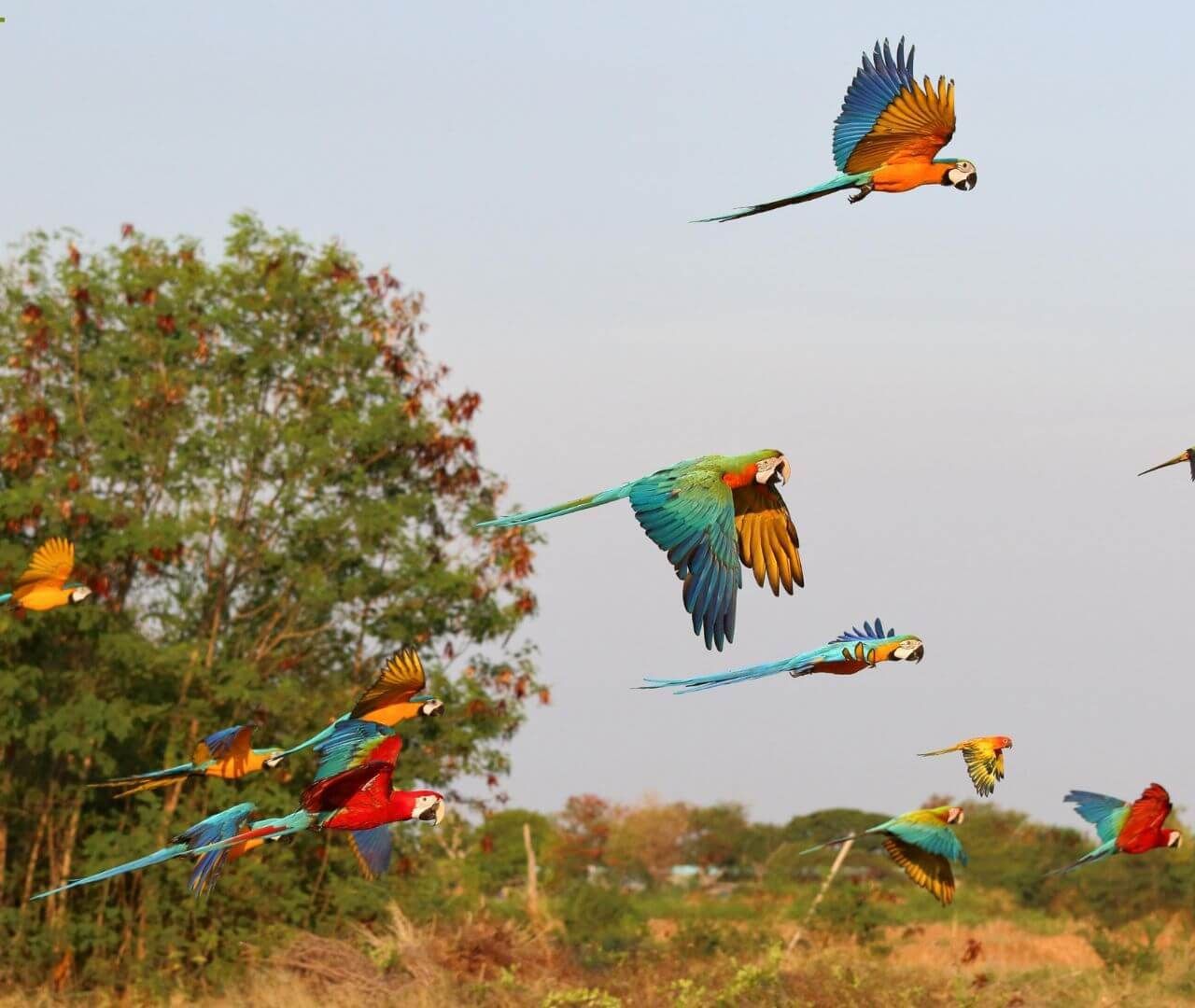Macaws

Let's Learn About Macaws
Word of the Week
Granivore
Granivores are animals that eat nuts and seeds (often considered to be grains).
Some mice, squirrels, and macaws are granivores.
Fast Facts
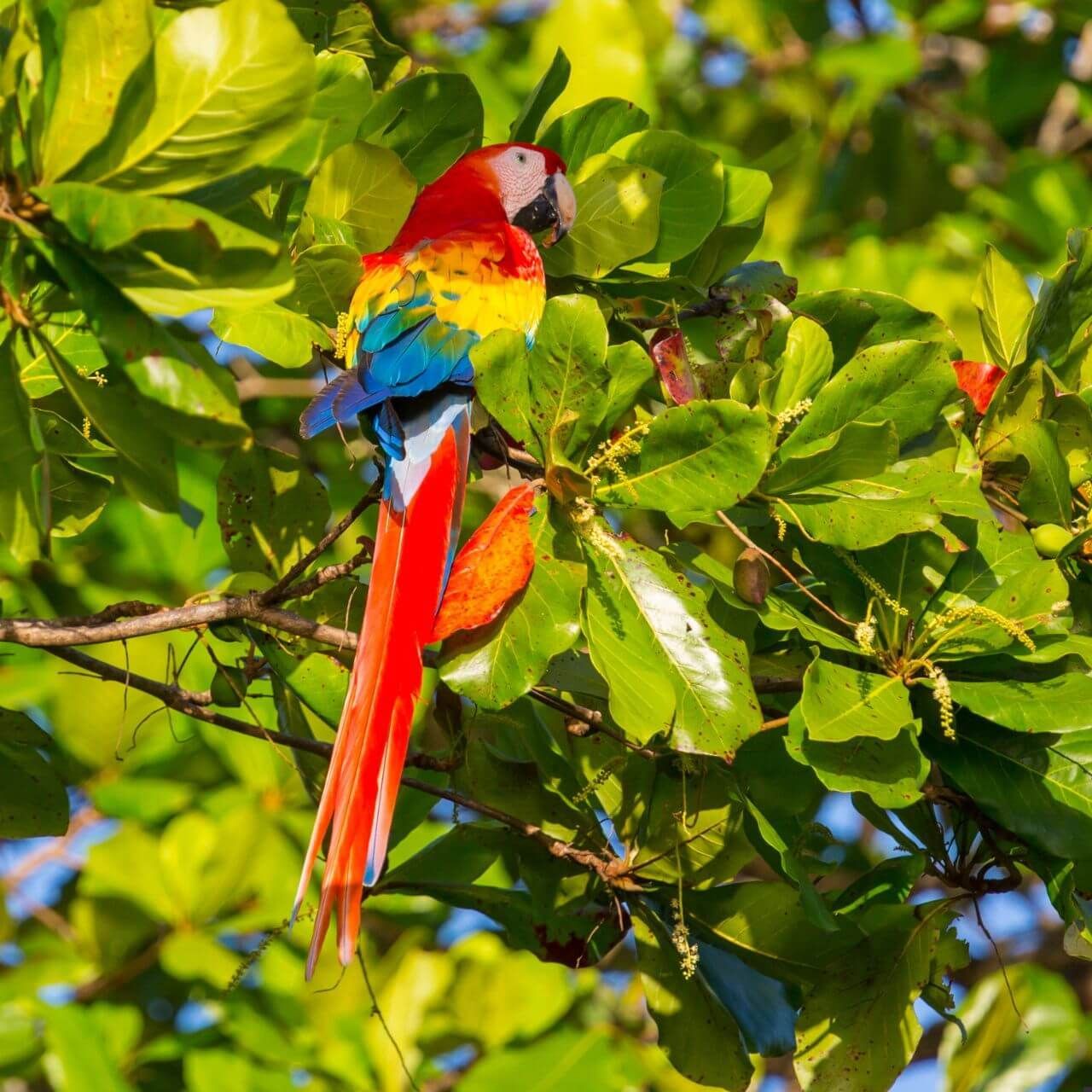
Where do macaws live?
Macaws live in North America and South America.
Most macaw species live in tropical rainforests. Some species prefer a more open area, like woodlands or savannas.
What do macaws eat?
Macaws are granivores, meaning they eat nuts and seeds.
Macaws use their sharp, hooked beak to crack open the hard shells of nuts and seeds. They also eat fruit, flowers, and small animals like insects.

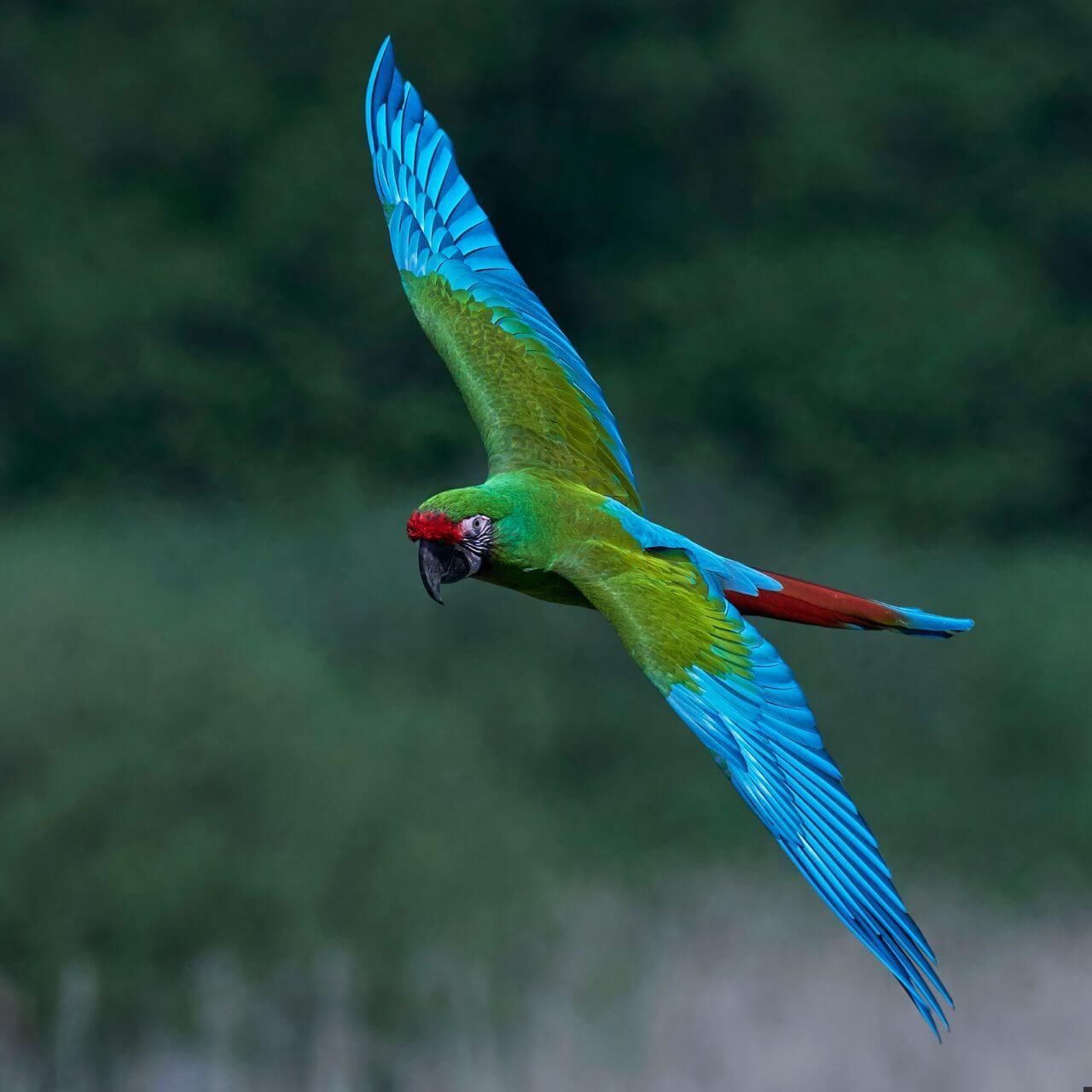
What traits do macaws share?
Macaws are a group of parrots that have several traits in common. Most macaws...
- Are large and colorful.
- Have a strong, hooked beak.
- Use their feet like hands.
- Make loud squawking sounds.
- Live in small social groups.
How many macaws are there?
Scientists identify at least 17 species of macaws. Some scientists claim there are 19 species.
Unfortunately, most macaws are threatened with extinction due to threats like deforestation and poaching. Macaws and other parrots are frequently taken from the wild and illegally sold around the world as pets.
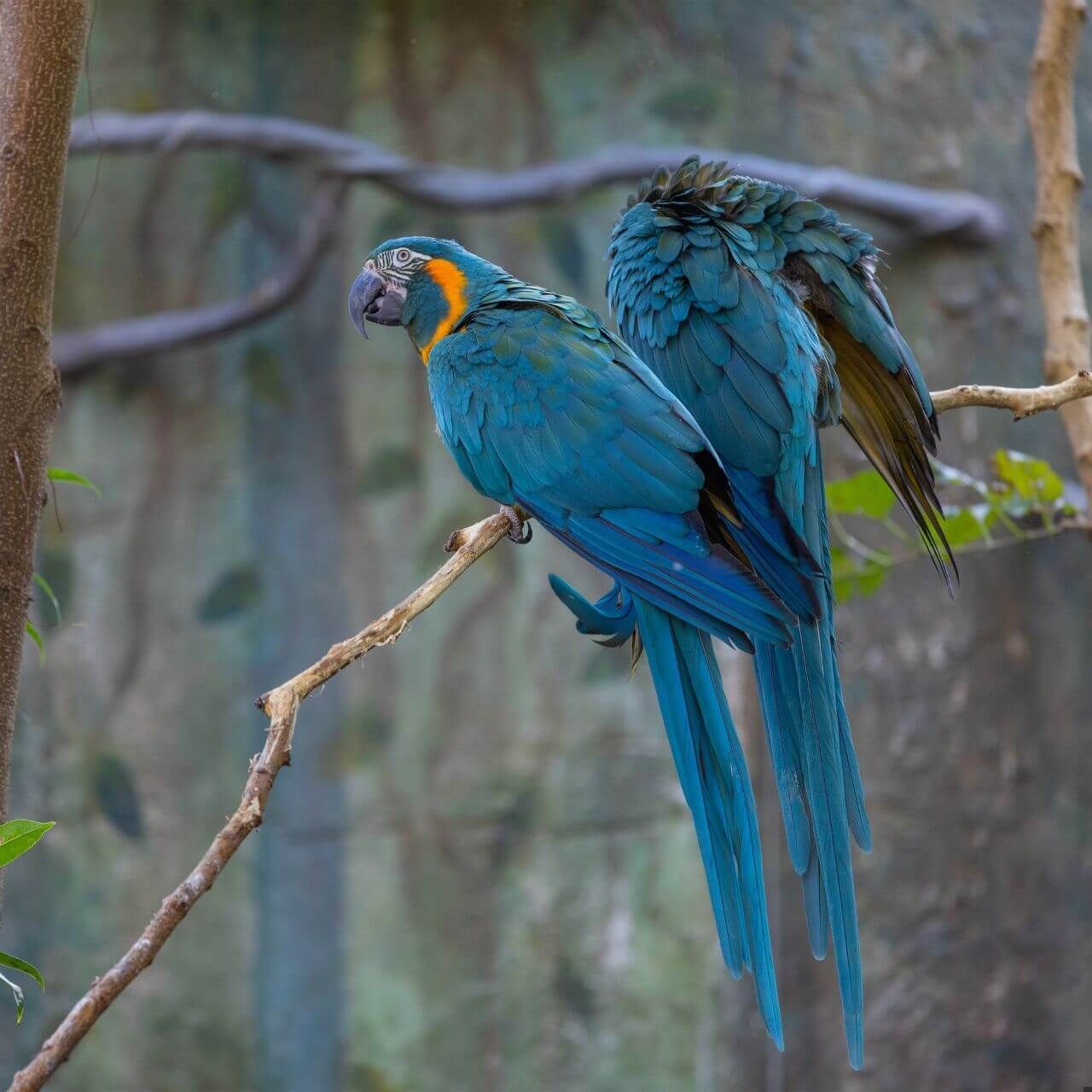
Species Spotlight
Hyacinth Macaw
Anodorhynchus hyacinthinus
At 3 feet long, hyacinth macaws are the largest flying parrot in the world. Like other macaws, they have vibrant colors and a sharp, hooked beak. They are only found in small, isolated patches of rainforest in South America.
Hyacinth macaws are very picky about their habitat. They need large tree cavities to nest in, which they often find in manduvi trees. Unfortunately for the macaws, these cavities are also used by toco toucans. Scientists estimate that toucans eat about 50% of hyacinth macaw eggs. Their eggs are also eaten by jays, crows, possums, and coatis. Females spend most of their time on the nest to protect eggs. She relies on her mate to bring food.
Like other macaws, hyacinth macaws are granivores. They eat mostly nuts and seeds from palm trees. They use their sharp, powerful beak to crack open the hard shell. A hyacinth macaw's beak is so strong that they could even crack open a coconut. Research shows that hyacinth macaws disperse palm seeds around the forest in their waste or by dropping seeds as they travel.
Unfortunately, Hyacinth Macaws are threatened with extinction. Scientists estimate about 4,000 mature individuals live in the wild. Their main threats are habitat loss and poaching. Fortunately, many laws have been created to protect them. It is now illegal to buy or sell hyacinth macaws in Brazil and Bolivia. Scientists are also placing artificial nests in their habitat to provide more nesting opportunities. Learn more here:
BRAIN BLAST
Hyacinth macaws and the endangered Lear's macaw are commonly confused. Make a Venn diagram to describe their similarities and differences.
Conservation Corner
Illegal Trade of Parrots
Illegal wildlife trade: The selling and purchasing of wild animals that are protected by law.
Every year, billions of dollars worth of wild animals are sold illegally. Parrots are some of the most popular birds sold. Thousands are illegally poached from the wild every year. More than one million parrots are kept as pets, meaning more parrots live in captivity than in the wild.
Parrot poaching has occurred for hundreds of years. Today, most pet parrots are born in breeding centers. However, their parents or grandparents were likely taken from the wild. Historically, there were no laws preventing people from taking parrots from the wild. Many countries have recently created laws making it illegal to poach or sell parrots. International organizations, like CITES, prohibit the sale of parrots and other animals between countries.
Regardless of laws, parrots are still frequently taken from the wild. Some parrots, like the endangered Lear’s macaw, sell for more than $60,000. Poachers are willing to face the consequences of these laws to make money.
The best way to help stop the illegal wildlife trade is to avoid purchasing exotic pets. It is very challenging to confirm that the animal you are purchasing was not part of the illegal wildlife trade, even if the pet store claims they were not. If you are going to get an exotic animal, look for people trying to rehome their pets or rescue centers that have animals for adoption.
Learn More!
Glossary
Adaptation
The process by which a species becomes more fit for its environment over the course of several generations. It is a result of natural selection.
Beak
The extended jaw of a bird (also known as a bill).
Camouflage
The ability for an organism to blend into its surroundings usually to hide from prey or predators.
Canopy
The upper layer of a forest where most of the tree branches and leaves are.
Deforestation
The process of removing trees by cutting them down to use their wood or burning them to make room for something else.
Disruptive Coloration
[Camouflage] When an animal's colors or patterns break up the outline of its body making it harder for a predator to spot them.
Fledge
To develop flight feathers and the ability to fly and live independently.
Granivore
An animal that eats primarily nuts and seeds.
Herbivore
An animal that eats mostly plants.
Illegal Pet Trade
The illegal sale and purchasing of wild animals.
Monogamous
To have one mate per breeding season.
New World
[In zoology] Referencing North America and South America.
Parrot
An order of mostly colorful birds with a sharp, hooked bill and upright stance.
Poaching
The illegal hunting or collection of wild animals.
Rainforest
An ecosystem that receives a large amount of rain and has trees that form a closed canopy.
Seed Dispersal
The process of the seed being carried away from the mother plant.
Species
A closely related group of animals with similar characteristics that are capable of reproducing (example: tigers).
Toxin
A substance produced by a living organism that causes harm to others.
Tropical
A region near the equator that has warm temperatures year round.
Zygodactyl
[In bird feet] Having two middle toes face forward and two outside tows face backward. Zygodactyl feet are good for gripping.

